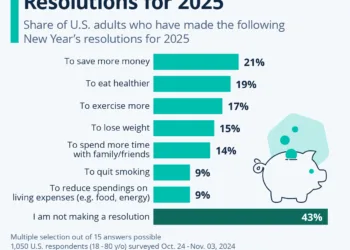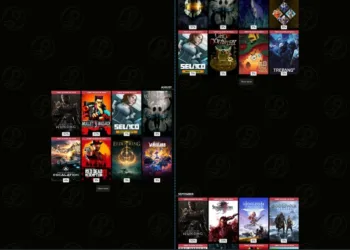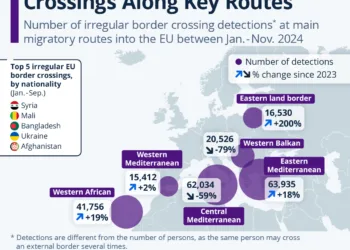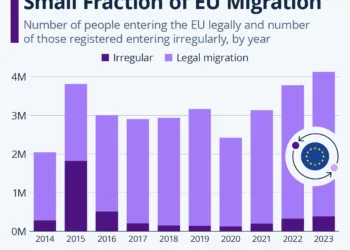Understanding Sexual Orientation Across Generations in the U.S.
The landscape of sexual orientation in the United States has undergone significant changes over the decades, reflecting broader societal shifts. Recent data reveals intriguing generational differences among U.S. adults aged 18-64 regarding sexual identity, with varying rates of identification as heterosexual, homosexual, bisexual, and pansexual.
Generational Breakdown of Sexual Orientation
According to findings from Statista, there is a notable correlation between age and the likelihood of identifying as non-heterosexual. Understanding these proportions can provide valuable insights into the evolving attitudes toward sexual orientation across different age groups.
Baby Boomers (Born 1946-1964)
In the Baby Boomer cohort, a staggering 96% identify as heterosexual. This substantial percentage highlights a conservative approach to sexual identity within this generation, possibly influenced by the societal norms and expectations prevalent during their formative years. Only a small fraction identifies as non-heterosexual, indicating a limited exposure or acceptance of diverse sexual orientations during this era.
Generation X (Born 1965-1980)
Following the Baby Boomers, Generation X shows a slightly more progressive stance, with 94% identifying as heterosexual. This group experienced significant cultural shifts, including the rise of LGBTQ+ rights throughout the 1980s and 1990s. As a result, although the majority still identify as heterosexual, there is a gradual opening toward broader sexual orientation acceptance.
Millennials (Born 1981-1996)
The Millennial generation marks the first major shift in sexual identity perceptions. Among Millennials, 88% identify as heterosexual. This marks a 6% decline from Generation X and reflects Millennials’ greater acceptance of diverse sexual orientations, shaped by more extensive discussions surrounding gender and sexuality that became prominent in media, education, and social movements in the late 20th and early 21st centuries.
Generation Z (Born 1997-2012)
The most pronounced generational shift appears with Generation Z, where only 79% identify as heterosexual. This generation’s relationship with sexual identity is notably more fluid, embracing various labels that reflect personal experiences and identities. Among Generation Z, the most common non-heterosexual identification is bisexual at 11%, suggesting a further acceptance of diverse sexual orientations compared to prior generations. Interestingly, 4% of Generation Z identifies as homosexual, a slight uptick compared to the other generations.
Trends in Non-Heterosexual Identification
While the percentages identifying as homosexual remain relatively steady across generations, we observe some nuances in bisexual identification:
- Baby Boomers: The representation of bisexuality in this group is minimal, reflecting the sexual conservatism of the era.
- Generation X: Similar trends continue with little representation for bisexual identities, although increased acceptance may have encouraged some individuals to explore and identify outside traditional labels.
- Millennials: This generation shows a considerable increase in non-heterosexual identities, with bisexuality becoming more mainstream.
- Generation Z: This trend is even more pronounced, highlighting a significant cultural shift toward recognizing and accepting a variety of sexual orientations.
Factors Influencing Sexual Identity
The changes in sexual orientation identification may stem from multiple factors, including:
Societal Attitudes
As society becomes increasingly accepting of different sexual orientations, younger generations feel more empowered to identify authentically. The normalization of LGBTQ+ identities through media representation and advocacy has led to a greater public discourse on sexuality.
Educational Shifts
With evolving sex education curricula that emphasize inclusivity and understanding of sexual diversity, younger individuals grow up with the confidence that comes from a knowledge-rich environment. This contributes to their willingness to embrace and declare their sexual identities openly.
Technology and Social Media
The rise of technology and social media platforms has allowed individuals from various backgrounds to connect, share experiences, and advocate for LGBTQ+ rights. This platform drastically reduces isolation and stigma, encouraging more people to openly explore and express their sexual orientation.
The Importance of Understanding Generational Differences
Recognizing the generational disparities in sexual orientation is essential for various reasons, including:
- Policy-making: Understanding these variations can aid in implementing policies that cater to the needs and rights of different demographics.
- Marketing: Businesses can more effectively tailor their products and services to resonate with the values and identity expressions of different age groups.
- Mental Health: Awareness of generational trends can enhance mental health support tailored to specific challenges faced by these groups related to sexual orientation acceptance.
In summary, the trends in sexual orientation identification among adults in the U.S. illustrate a profound shift in societal attitudes toward sexuality, particularly among younger generations. Each generation plays a crucial role in shaping the ongoing discourse surrounding sexual identity, and understanding these differences is vital in fostering an inclusive society.










